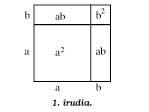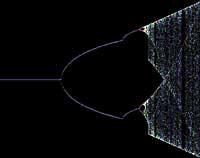Chaos of accumulation
2000/03/14 Roa Zubia, Guillermo - Elhuyar Zientzia
The order of particles can be decisive in the development of new materials.
We consider mathematics as a science of low actuality and we do not see any practicality. But when we're preparing the suitcase for travel, don't we miss the system of ordering things in less place?
Order has always been one of the greatest violent in the practical world. Mathematicians long ago studied ways to stack compact spheres. It doesn't matter if they are oranges or molecules. Mathematicians are able to see the abstract problem. If well shaken, the final distribution of the sets of spheres is known. Or not? So far it has been considered that 64% of the space was covered and that the rest was a gap.
The chemist Sal Torquato and his colleagues have re-analyzed the problem. The results have been published in the specialized journal Physical Review Letters on March 6. The conclusion is that 64% does not always occur, that is, it depends on the fall of the balls and how to shake them. "People have tried to find a method to predict the percentage of space occupied for a long time," says Torquato. "The concept is very poorly defined."
It is a great conceptual change. Scholars have taken care of this problem, as trade is basic to clean systems. Formerly, instead of making weights, they depended on the amount of material being put into a container. The reference also appears in the Bible: "Good measure well shaken and compacted". In current chemistry, for example, it is essential to know how molecules are located in materials.
Scientists have long known that this is an ordered accumulation of greater compactness. Johannes Kepler, mathematician and astronomer, announced this division. This was an accumulation with the filling of 74% of the space. Until recently it was not formally demonstrated, mathematically. This tank is a cubic distribution centered in zones.
Random storage has not been so studied. The experiments performed yield results between 60 and 68%. For Torquato and his colleagues this percentage can reach 74%. He believes that the definition of random processes is a very diffuse concept. It is an idea contrary to the concept of “closed accumulation”.
Chaos measurement
Princeton researchers have used the random process measurement method to find the solution. It is a mathematical formula. That is, the formula to measure the distance of the ordered distribution. From there the concept of "maximum randomness status" has been defined and the randomness of all situations in which the sphere is blocked has been studied. This is a computer calculation.
The order in which they have been found in minimum conditions is 64%. However, a method of systematic analysis of these situations is necessary.
On the other hand, from now on you have to discard the spheres and study other objects. But it's a tremendous job. Randomness is one of the most important general problems in the field of the master theme. It is a problem that is also reflected in computer science. According to Torquato, these modeling will be of great importance in the research of new materials. For example, the degree of randomness generated in the processing of materials can be analyzed. "This data can help improve the characteristics of the final materials," says Torquato.

Gai honi buruzko eduki gehiago
Elhuyarrek garatutako teknologia




